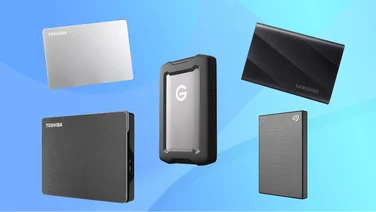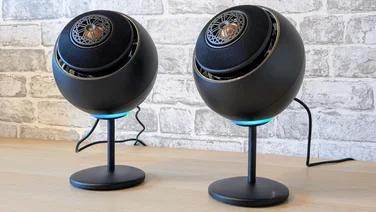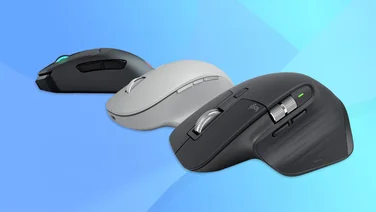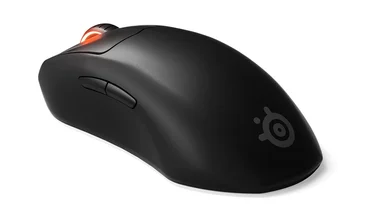To help us provide you with free impartial advice, we may earn a commission if you buy through links on our site. Learn more
- Best SSD: At a glance
- How to choose the best SSD for you
- How we test SSDs
- The best SSDs you can buy in 2023
- 1. Samsung 860 Evo: Best SATA SSD
- 2. Crucial BX500: Best-value SATA SSD
- 3. SanDisk Extreme Pro: Best portable SSD for speed
- 4. Samsung T7 Touch: Best portable SSD
- 5. Kingston A2000: Best all-round SSD
- 6. Kingston KC2500: Best high-end M.2 SSD
- 7. Samsung 870 QVO: Best high-capacity SATA SSD

SSDs are the best choice when it comes to storage. They’re far faster than old-school mechanical hard disks and a lot more compact. It doesn’t hurt that SSDs are also completely silent.
For all these reasons, an SSD is the ideal upgrade for an old PC or laptop. Even if you already have a solid-state drive, the latest models are faster than ever – and prices have tumbled over the past few years so, if you’re running short on space, you can upgrade to a larger model without breaking the bank. It’s up to you whether you choose an internal drive, to provide a speed boost to your OS and applications, or whether you opt for an external model that connects by USB and lets you conveniently carry your data around.
Here’s our expert guide to choosing your new SSD, along with our pick of the best models available today. We’ve focused on models with either 500GB or 1TB capacities, as that’s a comfortable size for most users’ programs and personal files, but if your needs are different then all of these disks are available in a range of capacities – at prices that are generally in line with their size.
In short, whether you’re looking for a tiny, nippy drive or a big beast of a disk, there’s an SSD to suit your needs. Read on to find out which one’s perfect for you.
Best SSD: At a glance |
||
|---|---|---|
| Best cheap power bank | Kingston A2000 (~£92) | |
| Best SATA SSD | Samsung 860 Evo (From ~£60) | |
| Best value SATA SSD | Crucial BX500 (From ~£27) | |
How to choose the best SSD for you
Do I need a SATA drive or can I use M.2?
If you’re choosing an internal drive, this will probably boil down to what your computer supports. The traditional 2.5in SATA SSD is a direct drop-in replacement for a mechanical hard drive, whereas the newer M.2 format requires a dedicated slot. M.2 drives can go much faster than SATA, and are typically more expensive, but either will be a major upgrade over an old-school hard disk.
As for external drives, most current models use custom designs that don’t match up to either the SATA or M.2 standards. And that’s not a problem – focus on performance, size and other factors instead.
Is it worth paying for the fastest speed possible?
For most people, any SSD will be fast enough to provide a snappy experience. But if performance is important to you – perhaps you’re a photographer or video editor working with very large files – there are a few metrics worth looking at. The first is sequential speed, which reflects how fast a drive can continually read and write large streams of data, such as raw video files; we use the CrystalDiskMark benchmark to measure this. The second is random-access performance, which gives insight into how a drive will fare when lots of programs are accessing it at once. We test this by copying a folder full of small files to and from each drive and measuring the average transfer speed.
Is it safe to keep my programs and files on an SSD?
Flash memory degrades each time data is written to it, so SSDs do have a limited lifespan. To give you an idea of how much data you can expect to store on a disk before it’s at risk of failure, all drives come with a stated write endurance in terabytes written (TBW). Expensive drives tend to have much greater write endurances than cheap ones, but even a low-cost SSD should last you for many years of ordinary, everyday use. If your drive fails before reaching its quoted write endurance, and it’s still within the warranty period, the manufacturer will replace it – but they won’t be able to bring your data back so always keep a backup.
READ NEXT: Best external drive for PS5
How we test SSDs
Every SSD on this page has been personally tested by our expert reviewers. For external drives, we attach the SSD to a Windows PC via a direct USB connection. We always use a port that supports the fastest transfer mode available, so if it’s a fast drive using a 10Gbits/sec or 20Gbits/sec connection, we’ll be able to measure its full performance potential.
With internal drives, we similarly use the fastest connection available: SATA SSDs are connected to a 6Gbits/sec SATA connector, while NVMe drives are installed in a dedicated slot with support for the relevant PCI-E version. That might be PCI-E 3.0 for older drives, or PCI-E 4.0 or 5.0 for the very latest models.
As noted above, we test sequential read and write speeds using the CrystalDiskMark benchmark, to discover the fastest data rates the drive can handle, plus our own file-copy tests, to represent everyday use.
However, while speed is important, it’s not the only consideration. We also look at the price of each drive, its TBW rating, and any bonus software or accessories that come with it. For external drives we also consider the physical design, particularly the portability and toughness, before arriving at our recommendations.
READ NEXT: Best external hard drives and SSDs
The best SSDs you can buy in 2023
1. Samsung 860 Evo: Best SATA SSD
Price when reviewed: From £60 | Check price at Amazon

SATA SSDs aren’t as speedy as M.2 models, but they’ll still make your computer feel far snappier and smoother than any mechanical disk – and they’re compatible with a wider range of laptops, desktop motherboards and storage appliances.
Of the models on offer, Samsung’s 860 Evo is our favourite. It’s not the cheapest, but it’s one of the fastest SATA drives available, with performance that hits the very limits of the SATA connection’s capabilities. In CrystalDiskMark’s sequential read test, the 860 Evo averaged an unbeatable 563MB/sec, with equally impressive sequential write speeds of 532MB/sec. It also achieved an average of 479MB/sec in the large-file read test, which again puts it in the very top rank of SATA drives.
Endurance ratings are persuasive too: this 500GB model (£6) is rated for 300TBW, while the 1TB model (£140) is designed to handle 600TBW, so you can be confident that it’ll last you for many years. For those with bigger storage needs, there are also 2TB and even 4TB models available.
Yes, there are cheaper alternatives out there, and most of them are fine for casual usage. But if you’re looking for a fast and reliable SATA SSD, Samsung’s 860 Evo is your best choice.
Key specs – Form factor: 2.5in SATA; Connection protocol: SATA; Capacities: 500GB, 1TB, 2TB, 4TB; Warranty: Five years RTB; NAND type: TLC
2. Crucial BX500: Best-value SATA SSD
Price when reviewed: From £27 | Check price at Amazon

There isn’t a huge difference in performance between SATA SSDs, simply because the SATA connection itself is the bottleneck. So there’s a good argument for buying the cheapest one that meets your needs – and depending on your needs, Crucial’s BX500 may well fit the bill.
It does come with a caveat: the drive has a relatively low write endurance of 120TBW for the 480GB model. That should do you for many years if all you want to do is run everyday apps and games, but we’d be wary of recommending it for a productivity workstation.
In performance tests, however, the BX500 acquitted itself very well. It blasted through CrystalDiskMark’s standard sequential read and write tests at a very decent 562MB/sec and 525MB/sec respectively, giving the Samsung 860 Evo a run for its money. It struggled more in our small-file tests, with read and write speeds dropping to 257MB/sec and 301MB/sec respectively, but this is still a drive that will give your PC that unmistakable SSD snap at a great price.
Key specs – Form factor: 2.5in SATA; Connection protocol: SATA; Capacities: 480GB, 1TB, 2TB; Warranty: Three years RTB; NAND type: TLC
3. SanDisk Extreme Pro: Best portable SSD for speed

Price when reviewed: From £119 | Check price at Amazon
If you’re lucky enough to have a compatible 2×2 port on your laptop or desktop PC, the SanDisk Extreme Pro lives up to its name by delivering scintillating read and write speeds of over 1,800MB/sec. That’s a lot of portable power.
The orange-lined design might not be to everyone’s taste, but the SSD is light at 85g and the tough plastic adds some protection. That means it should withstand a life of being quickly plonked into a bag.
There’s no getting around the fact that the SanDisk Extreme Pro is expensive, the 1TB is usually upward of £119, but you’re getting genuinely next-generation performance for your money.
Key specs – Form factor: Portable SSD; Connection protocol: USB 3.2 2×2; Capacities: 1TB, 2TB, 4TB; Warranty: Five years RTB
4. Samsung T7 Touch: Best portable SSD

Price when reviewed: From £90 | Check price at Amazon
Built with life on the road in mind, the Samsung S7 Touch portable SSD is around the same size as a business card holder (57 x 85mm) and weighs a feather-light 58g without the cable. That makes it perfect for slipping into your pocket or bag when you, say, get off a train or leave a meeting.
It also has a party trick: the square on the front of the device is a fingerprint reader, letting you protect your files with 256-bit AES encryption. If other people need to use it too, you can set up to four fingerprints or a password.
But how fast is it? We measured a decent read rate of 912MB/sec in our test, which is slightly down from the promised 1,050MB/sec. Write speeds were lower, but they still exceeded anything you’ll get from a SATA connection. It lagged behind SATA rivals when it came to random-access performance, though.
However, its size makes the Samsung T7 Touch a perfect travelling companion, while the biometric scanner will provide peace of mind.
Key specs – Form factor: Portable SSD; Connection protocol: USB 3.2 Gen2; Capacities: 500GB, 1TB, 2TB; Warranty: Three years RTB
5. Kingston A2000: Best all-round SSD

Price when reviewed: £92 | Check price at Amazon
When it launched last year, the A2000’s amazing price-to-performance ratio instantly made it a top M.2 SSD, and even against the ravages of time – and newer, faster drives – it still stands out today.
To be clear, what impresses most about the A2000’s speeds is not how high it can peak: we recorded a sequential read speed of 2,281MB/sec and a sequential write speed of 2,183MB/sec, both of which surpass Kingston’s own official figures but aren’t leading many tables more generally. Remember, however, that sequential speeds are rarely sustained in normal usage, and a lot of seemingly ultra-fast SSDs can slow to a crawl when faced with more trying transfers involving hundreds of non-sequentially stored files. The A2000 is special because, despite its lower price and apparently lower specs, it can maintain good speeds even in these much tougher conditions.
The result is that in most use cases, the A2000 can compete with the very best on performance for an awful lot less cash. In fact, it’s even cheaper than the likes of the WD Blue SN550 and Crucial P2, so it’s arguably the best budget M.2 SSD as well.
Key specs – Form Factor: M.2; Connection protocol: NVMe; Capacities: 500GB; Warranty: Five years RTB; NAND type: TLC
6. Kingston KC2500: Best high-end M.2 SSD

Price when reviewed: £45 | Check price at Amazon
There’s no getting around this: the KC2500 isn’t cheap. It is, however, outstandingly fast, in both sequential and non-sequential workloads; its CrystalDiskMark scores of 3,445MB/sec in the read test and 2,795MB/sec in the write test are just one showcase of its power.
We’ve yet to see better overall performance from a PCI-E 3.0 SSD, so for a significant upgrade on this, you’d need to spend even more on a PCI-E 4.0 model – and have an expensive, PCI-E 4.0-compatible motherboard in the first place. And this isn’t the only opportunity for the KC2500 to flaunt its premium status: thanks to its use of highly density, 96-layer NAND.
It’s also worth pointing out that the 500GB model, in particular, seems to be dropping in price relatively quickly. PC component pricing is mercurial at the best of times but hopefully this is a sign of all four capacities becoming more affordable in the not-too-distant future.
Key specs – Form Factor: M.2; Connection protocol: NVMe; Capacities: 500GB; Warranty: Five years RTB; NAND type: TLC
7. Samsung 870 QVO: Best high-capacity SATA SSD

Price when reviewed: From £54 | Check price at Amazon
For all the speed and form factor benefits of SSDs over mechanical hard disks, the latter are still considered better for simply maximising capacity. If you’re a videographer or digital artist and just want as many terabytes as you can fit in your PC’s case, there’s a distinct lack of choice for SSDs offering 2TB or more, to say nothing about the cost-effectiveness of huge HDDs.
Nonetheless, the 870 QVO could be the first step towards a purely solid-state future. It’s the first-ever 8TB SATA SSD on the consumer market (and joins an exceedingly small pool of 4TB models), employing QLC memory instead of the 860 Evo’s TLC to increase density and thus storage space.
There are some caveats. QLC is slower than TLC, so the 870 QVO can lag behind the rest of Samsung’s typically blazing-fast SSD catalogue, and the larger models are serious investments. Then again, measured on a cost-per-gigabyte basis, their immense size does result in a certain kind of value: the 8TB model, for instance, works out at a mere 5p per gigabyte.
Key specs – Form factor: 2.5in SATA; Connection protocol: SATA; Capacities: 1TB, 2TB, 4TB, 8TB; Warranty: Three years RTB; NAND type: QLC













